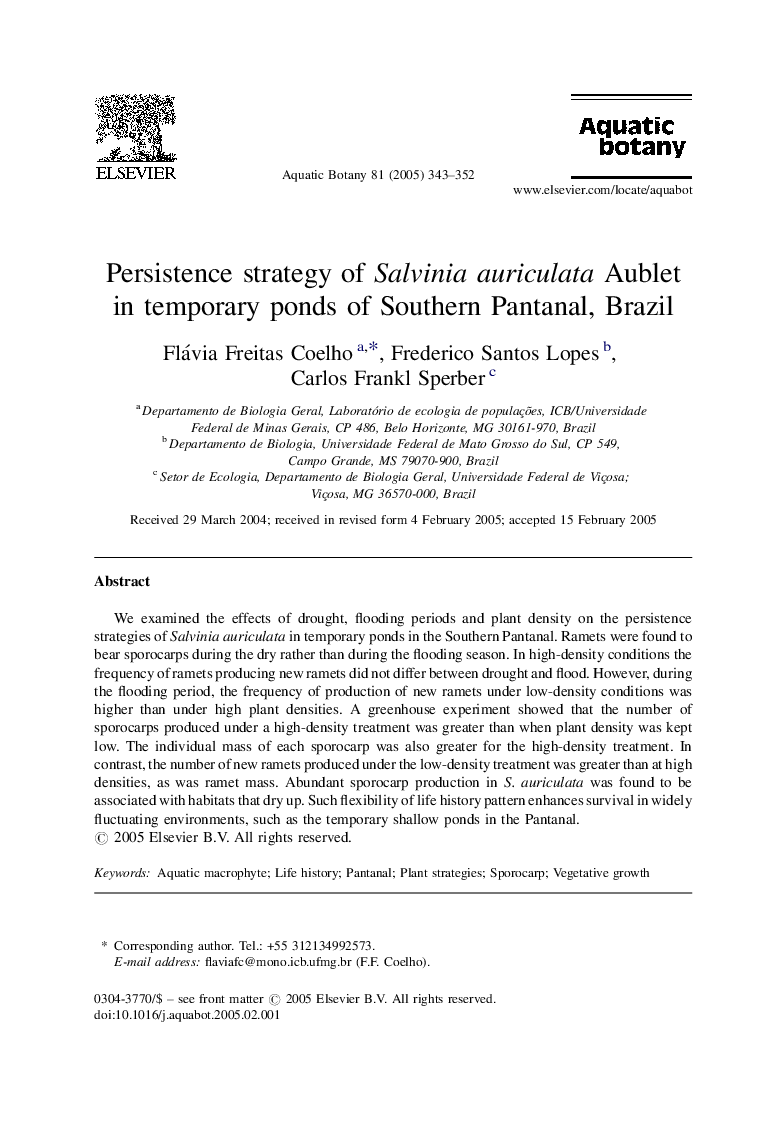| Article ID | Journal | Published Year | Pages | File Type |
|---|---|---|---|---|
| 9477595 | Aquatic Botany | 2005 | 10 Pages |
Abstract
We examined the effects of drought, flooding periods and plant density on the persistence strategies of Salvinia auriculata in temporary ponds in the Southern Pantanal. Ramets were found to bear sporocarps during the dry rather than during the flooding season. In high-density conditions the frequency of ramets producing new ramets did not differ between drought and flood. However, during the flooding period, the frequency of production of new ramets under low-density conditions was higher than under high plant densities. A greenhouse experiment showed that the number of sporocarps produced under a high-density treatment was greater than when plant density was kept low. The individual mass of each sporocarp was also greater for the high-density treatment. In contrast, the number of new ramets produced under the low-density treatment was greater than at high densities, as was ramet mass. Abundant sporocarp production in S. auriculata was found to be associated with habitats that dry up. Such flexibility of life history pattern enhances survival in widely fluctuating environments, such as the temporary shallow ponds in the Pantanal.
Related Topics
Life Sciences
Agricultural and Biological Sciences
Aquatic Science
Authors
Flávia Freitas Coelho, Frederico Santos Lopes, Carlos Frankl Sperber,
